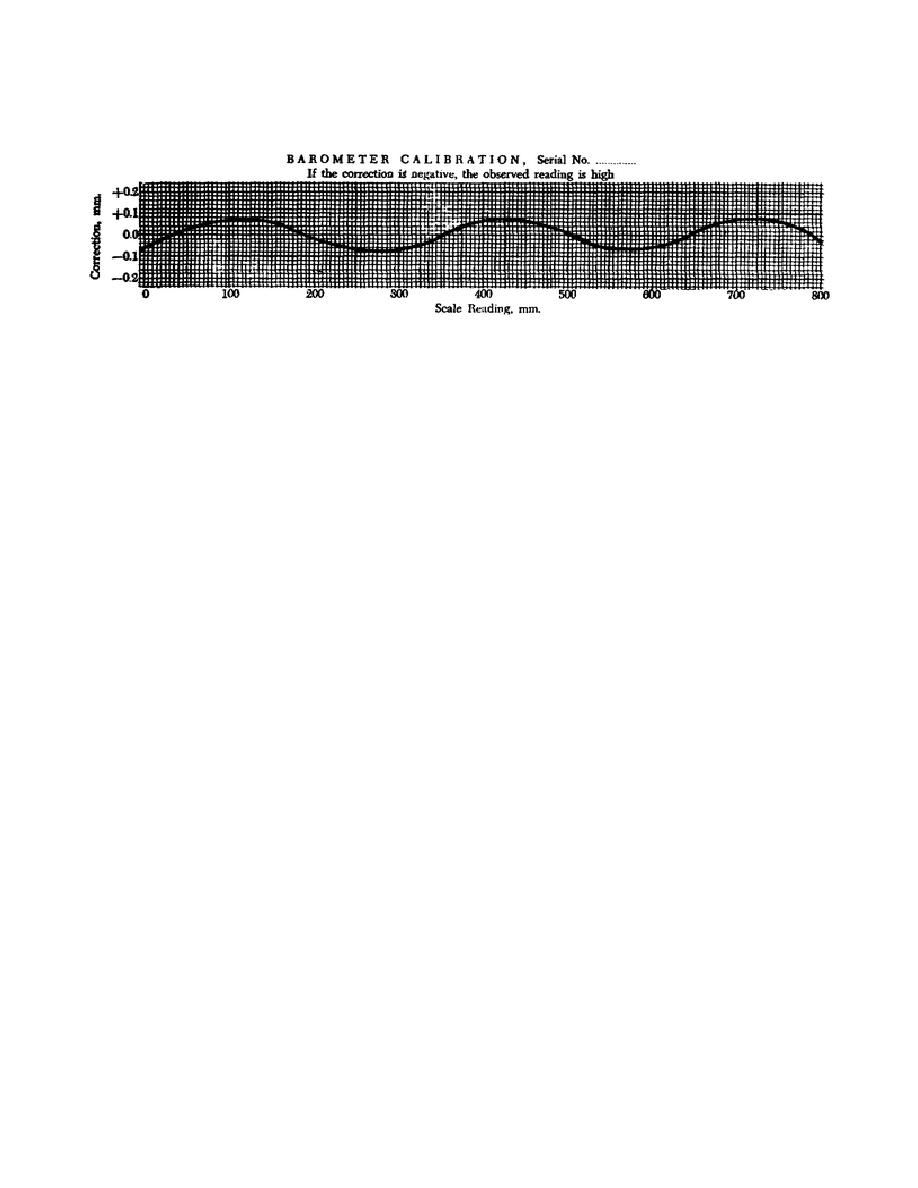
SM0486
Figure 16.
Barometer calibration correction chart
(4) In some cases, you must reverse the sign when the reading to be
observed for a given true pressure is desired.
For example, assume that an
altimeter is calibrated at 6000 feet.
When the vernier slide altitude index is
positioned at 6000 feet, the pressure vernier indicates 609.00 mm.
If the
calibration chart correction for a reading of 609.00 mm is -0.04 mm, it is added to
the 609.00 mm to obtain 609.04 mm, which is the true setting of the vernier slide
for 6000 feet.
(5) You can see that the preceding example is a direct reverse of the
procedure used in the example used for Figure 16.
Let's continue with the
altimeter calibration which is our example of a typical A-1 barometer application.
(6) Open the vacuum valve slightly.
The mercury should fall and the
altimeters should indicate an increase in altitude.
As the pressure nears the
desired point, the meniscus inside the sighting ring is visible through the open
side of the ring. Continue to decrease the pressure (with the vacuum valve) until
the highest point of the meniscus appears to barely touch the lower edge of the
sighting ring as shown in Figure 13. If the pressure has been reduced too much, as
indicated by light being visible above the entire meniscus, close the vacuum valve
completely and slowly open the relief valve to allow the pressure to rise to the
proper point.
(7) After you have adjusted the pressure to
align the mercury meniscus with
the sighting ring, the pressure in the test chamber
is the same as the altitude for
which the vernier slide was set.
Read and record
the altimeter readings.
These
readings should agree with the altitude for which
the barometer vernier slide is
set.
9.
The Aneroid Barometer.
a. Altimeters use aneroid barometers for their pressure sensing devices.
Therefore, we are primarily concerned with the construction principle of the
aneroid barometer and its pressure sensing capabilities. Figure 17 is included so
that you can see how the aneroid barometer construction principle is applied on
pressure measurements.
To simplify our analysis of the aneroid construction
principle, we establish a set of conditions and a
65



 Previous Page
Previous Page
